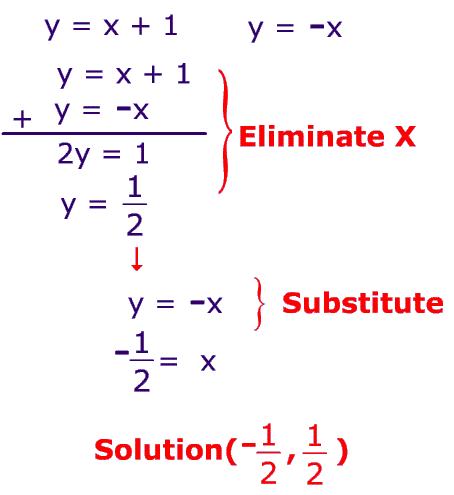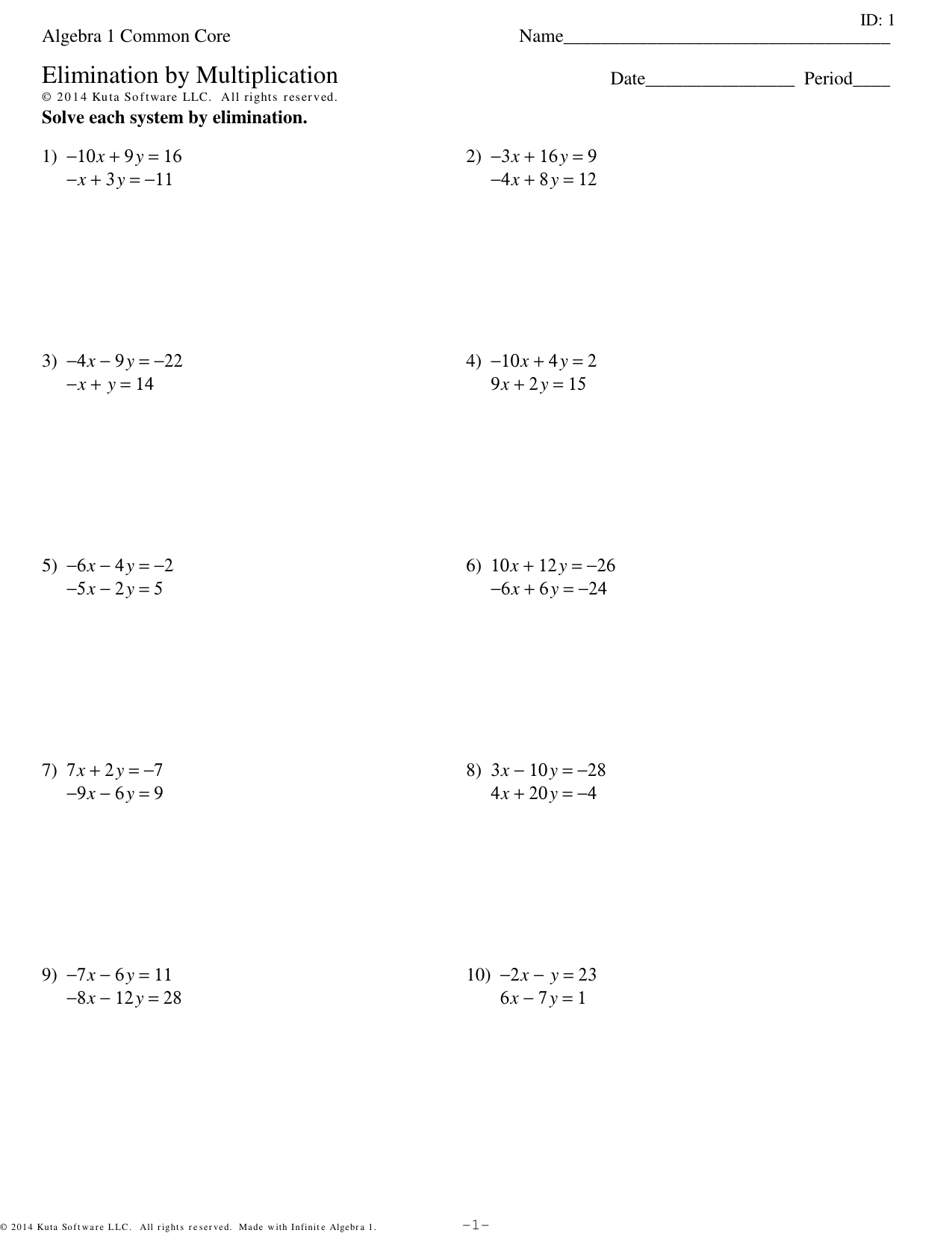
Check this article to know about the solutions of linear equations. It is advisable to check whether the given linear equations are of intersecting lines, parallel lines, or coincident lines before trying to solve them. So, in the elimination method when there are infinitely many solutions possible, we get the result in the form of 0=0. If you multiply any non-zero constant with both equations, you will find that every time x-variable terms and y-variable terms are getting canceled or eliminated. For example, try to solve equations x+y=2 and 2x+2y-4=0. In such cases, we get an answer in the form of 0=0 if we apply the elimination method. So, if by the elimination method we solve a system of equations of coincident lines, we get a consistent system with infinite solutions. Two equations of coincident lines have infinitely many solutions possible. Elimination Method: Infinitely Many Solutions So, in the elimination method when there is no solution, we get the result in this form. There is no other way to solve these equations as the solutions are inconsistent. Now, if we try to subtract equation 4 from equation 3, we get, 0=1 as both the variables are getting eliminated. In order to make the x coefficients equal in both the equations, we multiply equation (1) by 2 and equation (2) by 1. For example, let us solve two equations 2x - y = 4 → (1) and 4x - 2y = 7 → (2) by the elimination method. In such cases, we cannot eliminate only one variable. So, if we solve any such equations using the elimination method we get the answer as two unequal numbers on both sides of the unequal sign. Elimination Method: No SolutionsĪs we know that equations of two parallel lines have no solutions. Let us discuss each of these two cases in detail. And the equations of coincident lines have infinitely many solutions as they lie on each other so every point is the intersection or the common point of those lines. Equations of two intersecting lines will have only two solutions that are consistent, but the equations of two parallel lines have no solutions as these lines never intersect each other. Step 3: Substitute the value of y in equation 1, we get, x + 12/5 = 8īut what if while multiplying a non-zero constant, we get the coefficients of both the variables equal? What if both the terms got eliminated while adding or subtracting? We get such cases while solving equations of parallel and coincident lines. Step 2: Subtract equation 2 from 1, we get, y=12/5. So, the two equations we have now are 2x + 2y = 16 → (1) and 2x - 3y = 4 → (2). Step 1: To make the coefficients of x equal, multiply equation (1) by 2 and equation (2) by 1. Let us take an example of two linear equations x+y=8 and 2x-3y=4 to understand it better.


These are the elimination method steps to solve simultaneous linear equations.


Let us look at the steps to solve a system of equations using the elimination method. But it can only be applied to two equations at a time. We can solve three equations as well using this method. The elimination method is useful to solve linear equations containing two or three variables.


 0 kommentar(er)
0 kommentar(er)
